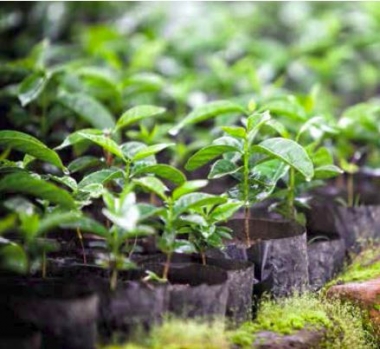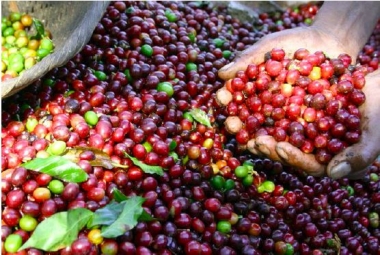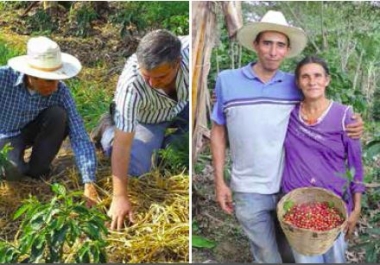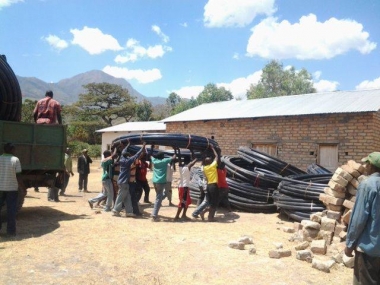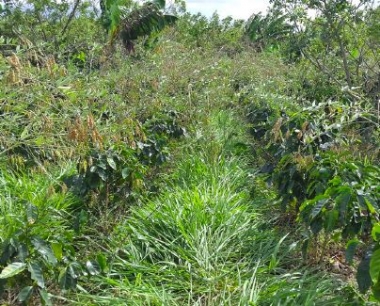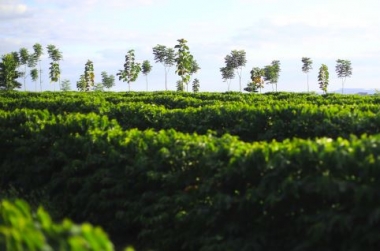Over the coming years, climate change will pose a challenge to coffee cultivation in many ways. Coffee crops have already diminished in several areas due to rises in temperature and because of unexpected rain or drought. Many scientists attribute this to the warming of the climate. The situation is also threatening coffee cultivation as a form of livelihood. What alternatives are available to farmers to practice their livelihood in the current areas or to move to new areas?
In 2010, to help the smallholder coffee farmers to adapt to the challenges posed by climate change, we established the Coffee & Climate initiative, together with six other European coffee industry companies and with the German developmental collaboration organisation GIZ. The project is based on a questionnaire involving one thousand South American, African and Asian farmers. Of the respondents, 40% said that climate change was already apparent in coffee cultivation. In Africa, the percentage was even higher.
Coffee is particularly sensitive to temperature increases; the coffee tree grows best in the mountains, within a temperature range of 15–25°C. As the climate warms up the growing region needs to be moved to a higher location. In addition to the right temperature, the coffee beans require the right amounts of dryness and moisture. The coffee trees are also more susceptible to diseases in a hot and humid environment.
Utilising environmental research and the best cultivation practices
In the Coffee & Climate project, practical tools are developed for farmers, by combining research information pertaining to climate change and cultivation practices which have proven to be successful. In addition to this, financial support systems to support goals are being developed.
As a company in the coffee industry, we are interested in the future of coffee and in ensuring the availability of certain types of coffee as the climate changes. It is important for us to understand what is happening in coffee cultivation and what it means to coffee farmers, so that we can help them prepare for coming changes and to get their livelihood from coffee well into the future.
Examples of implementations
Water for farmers in Tanzania
As a result of climate change, water, which was scarce to begin with, started running out in the Mbeya area in Tanzania. The local coffee farmer collective’s only water supply dried out and due to the tight regulation of water the performance of even everyday tasks grew challenging.
Through the support of the Coffee & Climate project, the collective installed a water pipe between the closest body of water and their village, and founded their own “water committee” to ensure the upkeep of water distribution. Thanks to the new water pipe, the village got eight new water points, one of which is in the village school. Additionally, the collective planted 800 trees around the body of water to prevent erosion. All of this enhanced the area’s coffee cultivation, improved living conditions and, above all, showed the collective that they can affect matters. It must feel good to improve things and to achieve something good together!
A simple method to increase the coffee yield in Guatemala
The coffee tree’s root hairs die in soil which gets hotter than 33.5°C. In the countries of origin, the warming of the soil to these temperatures is very common, which endangers the coffee crop. The Coffee & Climate working group has, since November of 2014, been seeking solutions to lower the temperature of the ground in the Esquipulas area, in Guatemala. As a result of patient testing, coffee farmers now have a simple method which has been proven to efficiently lower the temperature of the ground. Cover crops and cover plants are planted around the coffee plants at a fixed depth as these plants cool the ground and allow the root hairs to thrive. Healthy roots mean the coffee trees yield better crops.
Windbreakers to protect coffee trees in Brazil
Strong and cold winds have increased in Brazil. In the Minas Gerais area, for example, strong winds blow through the planted coffee trees. As a result, various diseases and parasites, which were sporadic before, now plague the coffee trees repeatedly, diminishing the income of farmer families. With the support of the Coffee & Climate project, 319 coffee farmers have planted various trees around their coffee plantations, testing which trees provide the best protection from the wind. The planted trees also increase the diversity of nature, protect the coffee trees from heat and slow down the evaporation of water. Three tree types have been deemed the most ideal, and a total of 12,500 of them have now been planted in the coffee plantations.
Further information on Coffee & Climate you can find: www.coffeeandclimate.org

